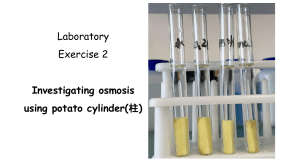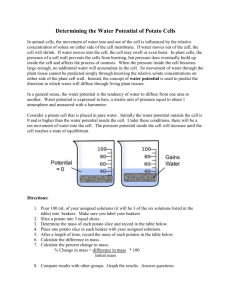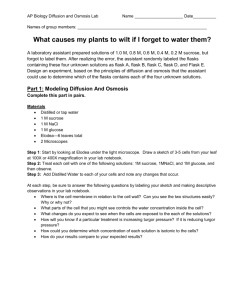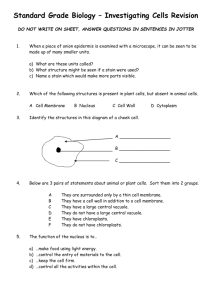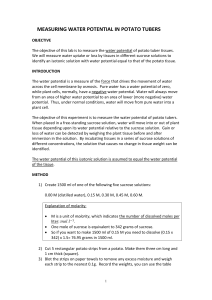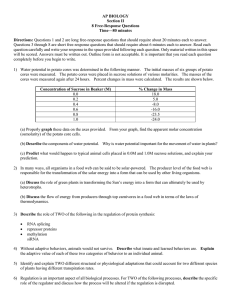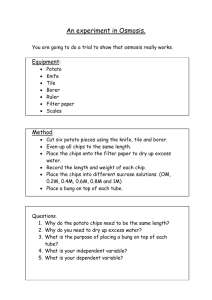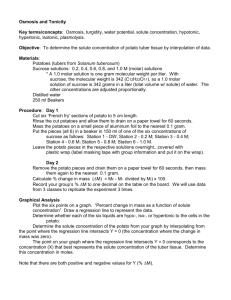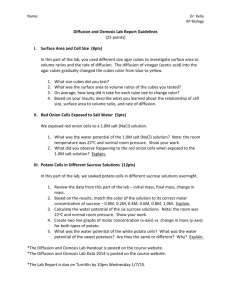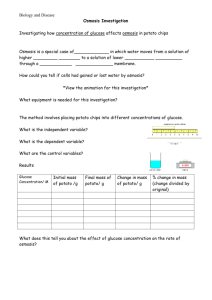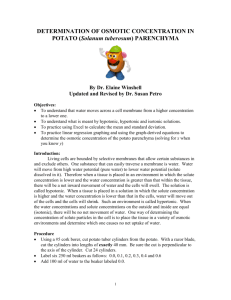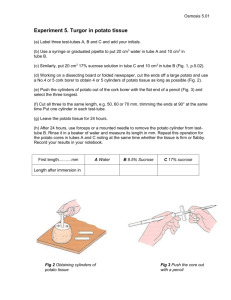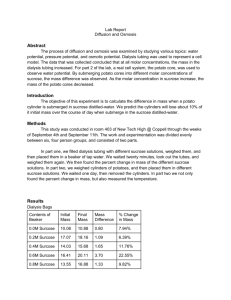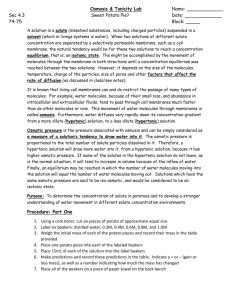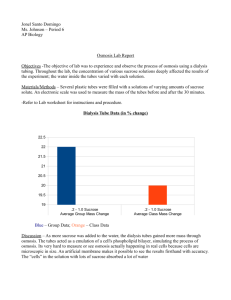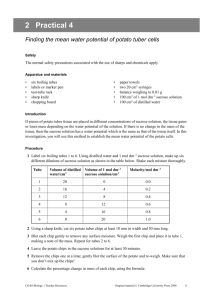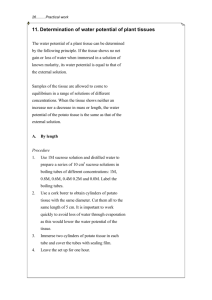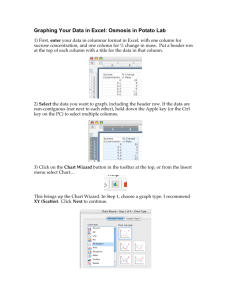5.03 Discussion
advertisement
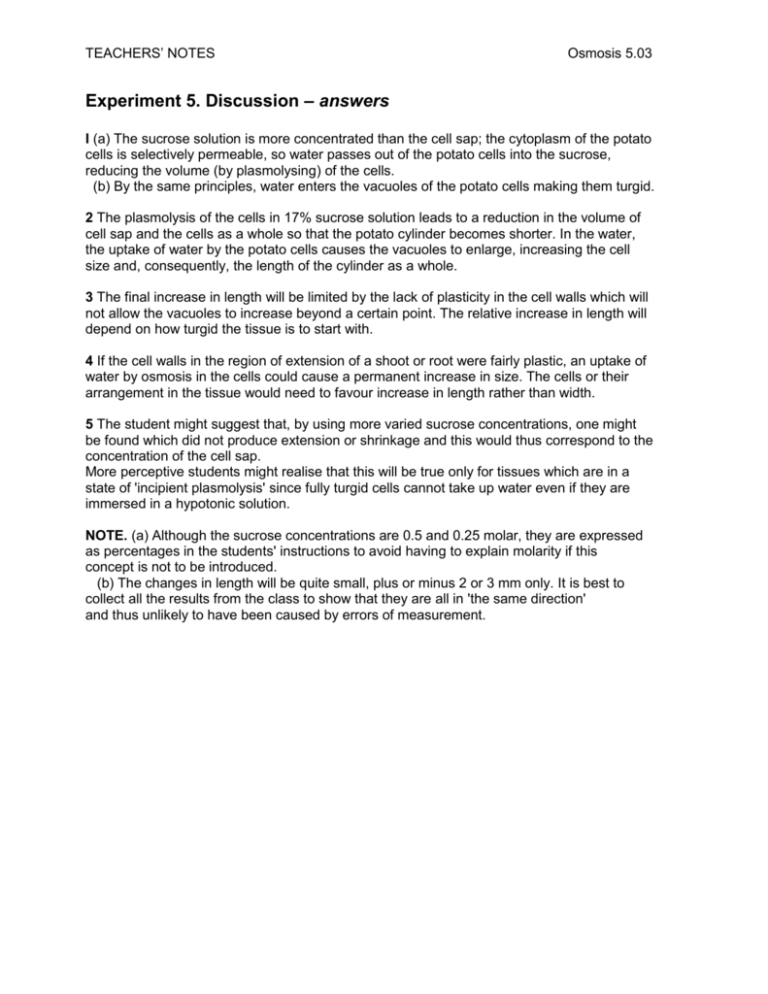
TEACHERS’ NOTES Osmosis 5.03 Experiment 5. Discussion – answers I (a) The sucrose solution is more concentrated than the cell sap; the cytoplasm of the potato cells is selectively permeable, so water passes out of the potato cells into the sucrose, reducing the volume (by plasmolysing) of the cells. (b) By the same principles, water enters the vacuoles of the potato cells making them turgid. 2 The plasmolysis of the cells in 17% sucrose solution leads to a reduction in the volume of cell sap and the cells as a whole so that the potato cylinder becomes shorter. In the water, the uptake of water by the potato cells causes the vacuoles to enlarge, increasing the cell size and, consequently, the length of the cylinder as a whole. 3 The final increase in length will be limited by the lack of plasticity in the cell walls which will not allow the vacuoles to increase beyond a certain point. The relative increase in length will depend on how turgid the tissue is to start with. 4 If the cell walls in the region of extension of a shoot or root were fairly plastic, an uptake of water by osmosis in the cells could cause a permanent increase in size. The cells or their arrangement in the tissue would need to favour increase in length rather than width. 5 The student might suggest that, by using more varied sucrose concentrations, one might be found which did not produce extension or shrinkage and this would thus correspond to the concentration of the cell sap. More perceptive students might realise that this will be true only for tissues which are in a state of 'incipient plasmolysis' since fully turgid cells cannot take up water even if they are immersed in a hypotonic solution. NOTE. (a) Although the sucrose concentrations are 0.5 and 0.25 molar, they are expressed as percentages in the students' instructions to avoid having to explain molarity if this concept is not to be introduced. (b) The changes in length will be quite small, plus or minus 2 or 3 mm only. It is best to collect all the results from the class to show that they are all in 'the same direction' and thus unlikely to have been caused by errors of measurement.



